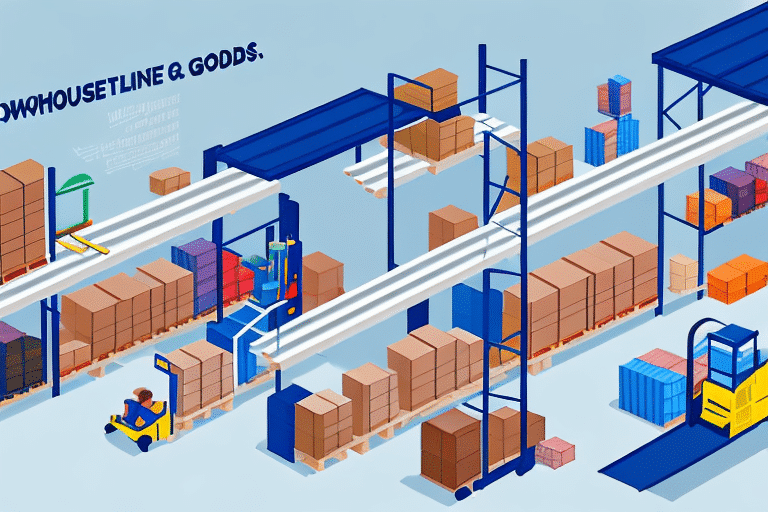A Comprehensive Guide to Using Bar Code Scanners for Ecommerce Businesses
As ecommerce businesses continue to grow rapidly, implementing efficient inventory management strategies becomes crucial for sustaining success and competitiveness. One such strategy that has gained significant traction in recent years is the use of bar code scanners. Bar code scanners offer a quick, accurate, and reliable method to track inventory, manage orders, and enhance overall operational efficiency. In this guide, we delve into the essentials of bar code scanners, exploring their types, benefits, selection criteria, setup processes, best practices, and future trends relevant to ecommerce businesses.
Types of Bar Code Scanners
Understanding the different types of bar code scanners available is fundamental to selecting the right tool for your ecommerce operations. The primary categories include:
- Handheld Scanners: Portable and versatile, handheld scanners are ideal for scanning products in various settings, including warehouses and retail spaces. They offer flexibility in movement and are suitable for small to medium-sized items.
- Mobile Computer Scanners: These scanners integrate a computer within the device, enabling advanced functionalities such as real-time data processing and wireless connectivity. They are beneficial for businesses requiring mobility and immediate data access.
- Fixed-Mount Scanners: Stationary devices typically integrated into conveyor systems, fixed-mount scanners are designed for high-speed and high-volume scanning, making them suitable for large inventory operations.
- Presentation Scanners: Optimized for retail environments, presentation scanners can quickly scan items presented at various angles, enhancing the speed and efficiency of the checkout process.
- 2D Scanners: Unlike traditional scanners that read only linear bar codes, 2D scanners can decode both linear and 2D bar codes, accommodating more complex information formats such as QR codes found on passports and driver's licenses.
Choosing Between 1D and 2D Bar Code Scanners
The choice between 1D and 2D scanners depends on your specific business needs. While 1D scanners are sufficient for standard product bar codes, 2D scanners offer versatility for more detailed information encoding, which can be beneficial for advanced inventory management and security purposes.
Benefits of Bar Code Scanners in Ecommerce
Implementing bar code scanners offers numerous advantages for ecommerce businesses:
- Increased Accuracy: Automating the scanning process minimizes human errors, ensuring that the correct products are picked, packed, and shipped, thereby enhancing order accuracy.
- Efficient Inventory Management: Real-time inventory tracking allows businesses to maintain optimal stock levels, reduce overstocking or stockouts, and streamline the replenishment process.
- Enhanced Productivity: Automating data entry tasks accelerates operations, allowing employees to focus on more strategic activities, thus boosting overall productivity.
- Improved Customer Satisfaction: Accurate and timely order fulfillment leads to higher customer satisfaction rates, fostering loyalty and positive reviews.
- Cost Savings: Reducing errors and streamlining operations can lead to significant cost savings by minimizing returns, reducing labor costs, and optimizing inventory holding.
According to a Forbes article, integrating bar code scanning technology can increase warehouse productivity by up to 30%, highlighting its substantial impact on ecommerce efficiency.
Selecting the Right Bar Code Scanner for Your Ecommerce Business
Choosing the appropriate bar code scanner is pivotal for maximizing its benefits. Consider the following factors when making your selection:
- Scanning Requirements: Assess the types of bar codes you will be scanning (1D vs. 2D) and the volume of scans required to determine the scanner's capabilities.
- Compatibility: Ensure that the scanner seamlessly integrates with your existing inventory management systems and ecommerce platforms.
- Connectivity: Decide between wired and wireless scanners based on your operational environment and mobility needs.
- Durability: Evaluate the build quality and durability of the scanner, especially if it will be used in rugged environments.
- Budget: Balance the scanner’s features with your budget constraints to find a cost-effective solution that meets your needs.
- Vendor Support: Consider the level of customer support and warranty provided by the manufacturer to ensure reliable service.
Additionally, reviewing user testimonials and expert reviews can provide valuable insights into the scanner's performance and reliability.
Setting Up and Integrating Bar Code Scanners
Proper setup and integration are essential for leveraging the full potential of bar code scanners in your ecommerce operations.
Installation and Configuration
Begin by installing the scanner according to the manufacturer’s guidelines, ensuring it is correctly connected to your system. Configure the scanner settings to align with your inventory management workflows.
Software Integration
Integrate the bar code scanner with your inventory management system and ecommerce platform. This integration allows for automatic updating of inventory levels, order processing, and data synchronization between systems.
Employee Training
Train your staff on the effective use of the scanners, including scanning techniques, troubleshooting common issues, and understanding the integration with your systems. Proper training ensures smooth operations and minimizes errors.
Best Practices for Using Bar Code Scanners
To maximize the benefits of bar code scanners, adhere to the following best practices:
- Regular Maintenance: Clean and maintain scanners regularly to prevent malfunctions and extend their lifespan.
- Consistent Labeling: Ensure that all products have correctly printed and high-quality bar codes to facilitate accurate scanning.
- Data Accuracy: Verify the accuracy of scanned data by periodically auditing inventory records and scanning processes.
- Update Software: Keep scanner firmware and software up to date to benefit from the latest features and security enhancements.
- Optimize Workflow: Streamline your scanning processes to reduce bottlenecks and improve overall operational efficiency.
Troubleshooting Common Issues with Bar Code Scanners
Despite their reliability, bar code scanners can encounter issues. Here are common problems and their solutions:
- Low Battery Life: Regularly charge batteries or replace them as needed to ensure uninterrupted scanning operations.
- Dirty or Damaged Lens: Clean the scanner lens with appropriate cleaning solutions to maintain scanning accuracy. Replace damaged lenses promptly.
- Connectivity Problems: Check and secure connections, whether wired or wireless. Reset connections if necessary and ensure that network settings are correctly configured.
- Scanning Errors: Verify that bar codes are not damaged or obscured. Reprint labels if necessary and ensure that bar codes are within the scanner’s readable range.
- Software Compatibility: Ensure that the scanner’s software is compatible with your inventory management systems. Update or reinstall drivers if compatibility issues arise.
For more intricate issues, consult the scanner’s user manual or contact the manufacturer’s technical support for assistance.
Future Trends in Bar Code Scanner Technology for Ecommerce
The landscape of bar code scanner technology is continuously evolving, driven by advancements in related fields. Future trends include:
- Augmented Reality (AR) Scanning: Incorporating AR technology to enhance scanning processes, providing real-time data overlays and improving user interaction.
- Artificial Intelligence (AI) Integration: Leveraging AI to analyze scanning data, predict inventory needs, and optimize stock levels based on purchasing trends.
- Internet of Things (IoT) Connectivity: Connecting scanners with other IoT devices to create a seamlessly integrated smart warehouse environment, enhancing automation and data sharing.
- Enhanced Data Analytics: Utilizing advanced analytics tools to derive actionable insights from scanning data, driving strategic business decisions.
- Increased Security Features: Implementing advanced security protocols to protect scanned data from breaches and unauthorized access.
Staying abreast of these trends will enable ecommerce businesses to adopt cutting-edge technologies, ensuring continued efficiency and competitiveness in the dynamic online marketplace.
In conclusion, bar code scanners are indispensable tools for ecommerce businesses aiming to optimize their inventory management, improve order accuracy, and enhance overall operational efficiency. By selecting the right scanner, effectively integrating it into your systems, and adhering to best practices, your business can reap substantial benefits. Furthermore, keeping an eye on emerging technologies will position your ecommerce operations at the forefront of industry advancements.








